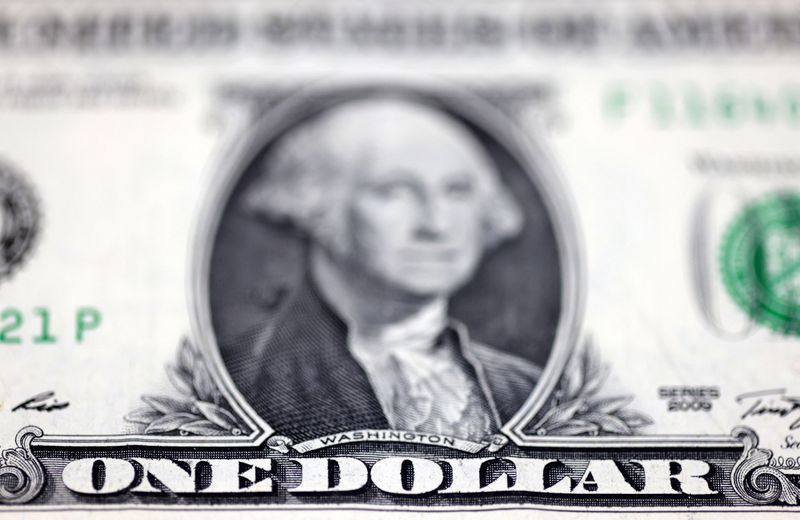By Kevin Buckland
TOKYO (Reuters) -The dollar hovered near a one-month peak against the euro and pushed to a one-week high versus the yen on Tuesday as traders braced for crucial U.S. inflation data and fresh Federal Reserve interest rate forecasts the following day.
The U.S. currency was supported by higher Treasury yields in the aftermath of surprisingly robust domestic jobs data at the end of last week, which triggered a dramatic paring of bets for Fed rate cuts this year.
The Bank of Japan sets policy on Friday, and while investors expect a reduction in the central bank's monthly government bond purchases as early as this meeting, gaping yield differentials with the U.S. have kept the yen on the defensive.
The dollar added 0.15% to stand at 157.275 yen after earlier touching its highest since June 3 at 157.335.
The euro was flat at $1.076825. It slid to as low as $1.0733 on Monday, a level last seen on May 9, after gains by the far right in European Parliament elections spurred French President Emmanuel Macron to call a snap election.
Sterling was GBP=D3> was steady at $1.27355 ahead of labour data later in the day that is forecast to show a slowing in the decline in UK employment.
The U.S. dollar index, which measures the currency against the euro, sterling, yen and three other major peers, was little changed at 105.12, after reaching 105.39 on Monday for the first time since May 14.
Economists polled by Reuters expect headline U.S. consumer price inflation to ease to 0.1% from 0.3% last month, and core price pressures to remain steady on the month at 0.3%.
No policy change is expected at the conclusion of the Fed's two-day policy meeting ending Wednesday, but officials will update their economic and interest rate projections.
"Expect the Fed to remain cautious, stressing data dependency and the need to see further evidence that the disinflationary trend is firmly intact to give them confidence to move forward with easing rates," said Jack Janasiewicz, a portfolio manager at Natixis Investment Managers Solutions.
"As always, the data is in the driver's seat."
Officials have turned more hawkish since the last such release in March, when the median projection was for a reduction of three quarter-points this year. Markets are currently pricing in only 37 basis points of cuts by December.
By contrast, many analysts and investors expect a 1 trillion yen ($6.4 billion) drop in the BOJ's bond purchases to around 5 trillion yen per month, following media reports hinting at such a change from Reuters and other outlets.
"The danger here for the BOJ is a 'buy the rumour, sell the fact'-type reaction," which "catapults" the dollar through technical resistance at 157.70 yen, said Tony Sycamore, a market analyst at IG.
The BOJ and government are aligned on trying to limit yen weakness from scuppering a sought-after cycle of mild inflation and steady wage increases.

The currency's plunge to a 34-year low of 160.245 per dollar at the end of April sparked several rounds of official Japanese intervention worth a total of 9.79 trillion yen.
($1 = 157.1400 yen)